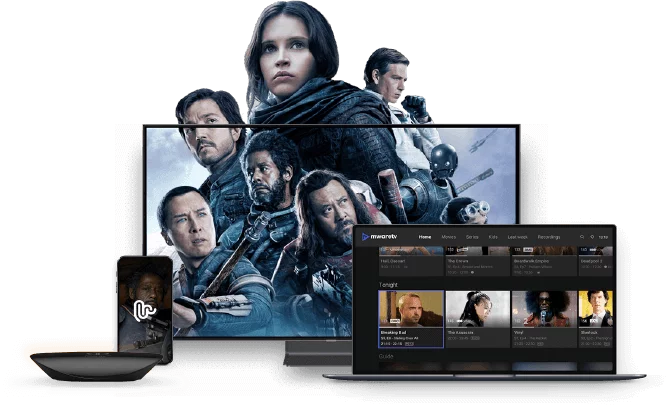Exactly How IPTV Works: A Step-by-Step Guide to Net Protocol Television Modern Technology
Web Protocol Tv (IPTV) has reinvented the method we take in tv material, providing a brand-new realm of possibilities via the power of the internet. Understanding the intricacies of exactly how IPTV functions can clarify the innovation that drives this cutting-edge type of media delivery. From the essential concepts of IPTV to the intricate process of material distribution, each step plays an essential function in making certain a seamless viewing experience. In this overview, we will certainly discover the hidden devices that make IPTV a fascinating combination of modern technology and home entertainment.
IPTV Essentials
In recognizing IPTV basics, it is critical to understand the essential functions of this innovation in providing tv material over the internet. IPTV, which stands for Internet Procedure Tv, utilizes Internet Protocol (IP) networks to transmit tv web content to individuals' tools. Unlike typical approaches of relaying television content through cable television or satellite signals, IPTV streams media with high-speed web connections.

Furthermore, IPTV permits for interactive capacities, such as video as needed (VOD) and electronic program overviews (EPG), boosting the individual experience by providing more control and adaptability in accessing content. In general, understanding the essentials of IPTV sets the structure for discovering its advanced performances and the benefits it uses to contemporary tv usage.
Content Delivery Refine
Reliable content shipment in IPTV systems involves a well-structured process that guarantees smooth transmission of television web content over IP networks. The material distribution procedure in IPTV begins with the creation of the video clip content, which is after that inscribed into electronic style ideal for IP transmission. This encoded web content is then safely stored on servers understood as media web servers. When a visitor requests specific web content, the IPTV system gets the requested data from the media servers and delivers it to the audience's tool over the net.

Middleware Performance
With the combination of middleware, IPTV systems gain boosted functionality that streamlines customer communication and material management. Middleware acts as a vital part that connects the gap in between the individual interface and the back-end facilities, helping with smooth interaction and interaction within the IPTV system. Among the crucial functions of middleware in IPTV is to make it possible for personalized user experiences by giving features such as interactive program guides, video-on-demand solutions, interactive advertising, and user preferences management. By centralizing these functionalities via middleware, provider can supply a much more dynamic and customized IPTV experience to their customers.

Device Compatibility
Given the critical function of middleware in allowing seamless communication and content administration in IPTV systems, a critical facet to take into consideration is the compatibility of tools made use of for accessing the IPTV solutions. Tool compatibility is important for making sure a smooth customer experience and ideal performance when accessing IPTV material.
In the context of IPTV, device compatibility refers to the capacity of a tool to properly engage with the IPTV service, display material properly, and support the required procedures and codecs for streaming video clip material over the net. Various devices, such as smart TVs, set-top boxes, mobile phones, tablets, and computers, may have varying levels of compatibility with IPTV services.
To ensure a seamless viewing experience, it find here is essential for users to choose devices that are compatible with the certain IPTV service they are making use of. Furthermore, IPTV company must provide assistance for a large range of tools to cater to the varied needs of their customer base. By focusing on tool compatibility, both individuals and provider can enhance the total IPTV experience.
Quality of Service (QoS)
Considering the critical function of keeping a high requirement of efficiency and reliability in IPTV systems, ensuring constant Top quality of Service (QoS) continues to be a fundamental element of the individual experience. QoS in IPTV refers to the capability of the system to supply content with very little disturbances, high resolution, and fast packing times. To accomplish optimal QoS, different variables need to be attended to. Network transmission capacity is important to support premium video streaming without buffering or pixelation. In addition, latency, jitter, and package loss need to be lessened to boost the watching experience.
Provider use QoS systems such as web traffic prioritization, buffering, and error modification to preserve a stable IPTV service. By focusing on IPTV website traffic over much less time-sensitive information, carriers can make certain smooth playback also throughout top usage hours. Buffering aids make up for network fluctuations, while mistake correction techniques boost data integrity.
Continual tracking and optimization of QoS specifications are important to adjust to altering network problems and customer demands. Inevitably, a robust QoS framework is important for supplying a smooth and enjoyable IPTV experience to individuals.
Final Thought
To conclude, IPTV runs via the transmission of television web content over internet procedure networks. The modern technology includes a methodical procedure of material distribution, helped with by middleware functionality to guarantee compatibility throughout different devices. Top quality of Service plays a vital duty in keeping the performance and dependability of IPTV solutions. Comprehending the basic principles of IPTV is crucial for comprehending the intricacies of this ingenious television modern technology.